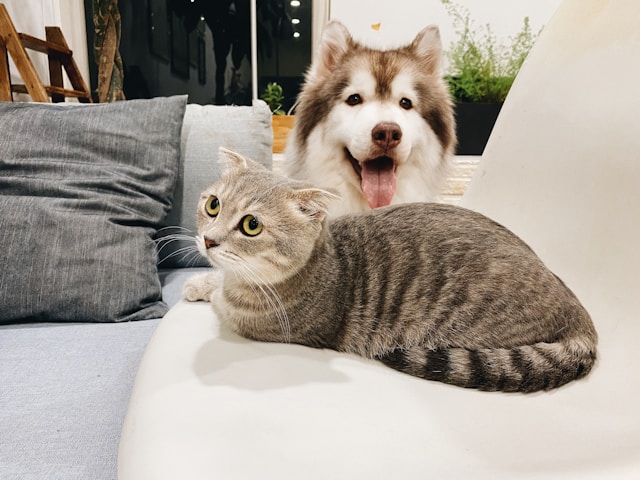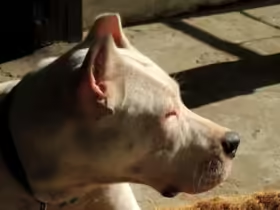Grooming your furry friend is more than just a way to keep them looking cute; it’s essential for their overall health and well-being. From regular brushing to the occasional bath, grooming can prevent health issues and strengthen your bond with your pet. In this ultimate guide, we’ll explore the ins and outs of grooming, tailored specifically for your beloved companion.
1. The Importance of Grooming
1.1 Health Benefits
Regular grooming helps maintain your pet’s skin and coat health, prevents matting, and allows for early detection of health issues such as skin infections, parasites, and lumps.
1.2 Bonding Time
Grooming can be a relaxing experience for both you and your pet. It offers a unique opportunity to bond, as pets often appreciate the attention and affection that comes with grooming.
1.3 Hygiene
Regular grooming keeps your pet clean and reduces the risk of odor. It helps eliminate dirt, debris, and dead hair, contributing to a healthier living environment.
2. Essential Grooming Tools
2.1 Brushes and Combs
- Slicker Brush: Great for removing mats and tangles in long-haired pets.
- Bristle Brush: Ideal for short-haired breeds to remove loose fur and distribute natural oils.
- Flea Comb: Useful for detecting and removing fleas.
2.2 Nail Clippers
Invest in quality clippers suited for your pet’s size. Regular nail trimming prevents painful overgrowth and injury.
2.3 Bathing Supplies
- Pet Shampoo: Choose a gentle, pH-balanced shampoo appropriate for your pet’s skin type.
- Conditioner: Helps detangle fur and adds moisture.
- Towels and Dryers: Have soft towels on hand for drying, and consider a pet-friendly dryer for faster results.
2.4 Ear and Eye Care
- Ear Cleaner: A vet-recommended solution for cleaning your pet’s ears.
- Eye Wipes: Specially designed wipes for removing tear stains and debris.
3. Grooming Techniques
3.1 Brushing
Frequency
- Short-haired Breeds: Brush once a week.
- Long-haired Breeds: Brush several times a week to prevent matting.
Technique
- Start from the head and work towards the tail, using gentle, smooth strokes. Be patient, especially with mats—take your time to avoid hurting your pet.
3.2 Bathing
Frequency
- Bathing frequency depends on your pet’s breed and lifestyle. Generally, every 4 to 6 weeks is sufficient.
Steps
- Prepare the Area: Use a non-slip mat in the tub to keep your pet steady.
- Wet the Coat: Use lukewarm water to soak your pet’s fur.
- Apply Shampoo: Massage the shampoo into the coat, avoiding the eyes and ears.
- Rinse Thoroughly: Ensure no shampoo residue remains.
- Dry Off: Use towels or a pet dryer, and reward them for good behavior.
3.3 Nail Trimming
How to Trim
- Hold the Paw: Firmly but gently hold your pet’s paw.
- Identify the Quick: Avoid cutting into the quick (the pink area) to prevent bleeding.
- Trim the Tip: Cut just the tip of the nail, and reward your pet afterward.
Frequency
Trim nails every 3-4 weeks or as needed based on your pet’s activity level.
3.4 Ear Cleaning
Frequency
Clean your pet’s ears every few weeks or as needed, especially if they are prone to wax buildup.
Steps
- Apply Cleaner: Use a vet-approved ear cleaner.
- Massage Base: Gently massage the base of the ear for 20-30 seconds.
- Wipe Out Debris: Use a cotton ball or gauze to wipe out any debris.
4. Special Considerations for Different Breeds
4.1 Dogs
- Long-haired Breeds: Such as Maltese or Shih Tzu require daily brushing and regular trims.
- Short-haired Breeds: Like Beagles may need less frequent grooming but benefit from occasional brushing to remove loose fur.
4.2 Cats
- Long-haired Cats: Require regular grooming to prevent matting. Aim for daily brushing.
- Short-haired Cats: Typically need less grooming but can benefit from weekly brushing to reduce shedding.
5. Professional Grooming: When to Seek Help
While many grooming tasks can be done at home, there are times when professional help is beneficial:
- Matting: If your pet is severely matted, a professional groomer can help.
- Anxiety: Some pets may be anxious about grooming; a professional may have the tools and experience to handle these situations more effectively.
- Specialized Grooming: Breeds requiring specific cuts or styles benefit from professional groomers.
6. Grooming for Different Seasons
6.1 Spring
As pets shed their winter coats, increase brushing frequency to manage loose fur.
6.2 Summer
Keep your pet cool with regular baths and trimming to prevent overheating.
6.3 Fall
Prepare for winter by ensuring your pet’s coat is healthy and thick, but continue regular grooming to reduce shedding.
6.4 Winter
Monitor for dry skin and consider moisturizing shampoos and conditioners.
Conclusion
Grooming is an integral part of pet care that fosters a healthy, happy, and well-adjusted pet. By investing time in grooming, you not only enhance your furry friend’s appearance but also their overall health and happiness. So, gather your tools, set aside some time, and make grooming a rewarding experience for both you and your beloved companion. Remember, every brush stroke is a step toward a pawsitively pampered pet!











Leave a Reply